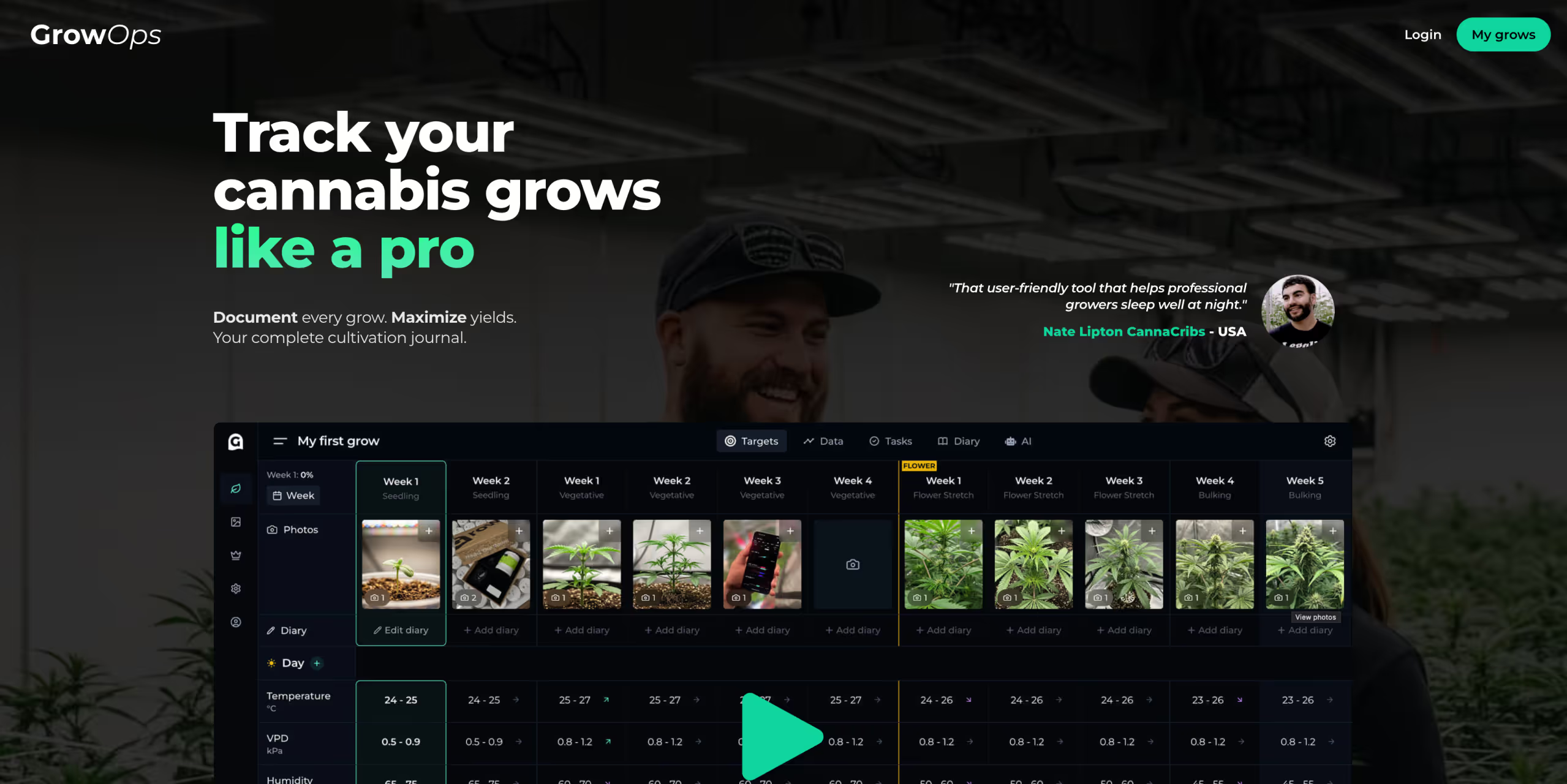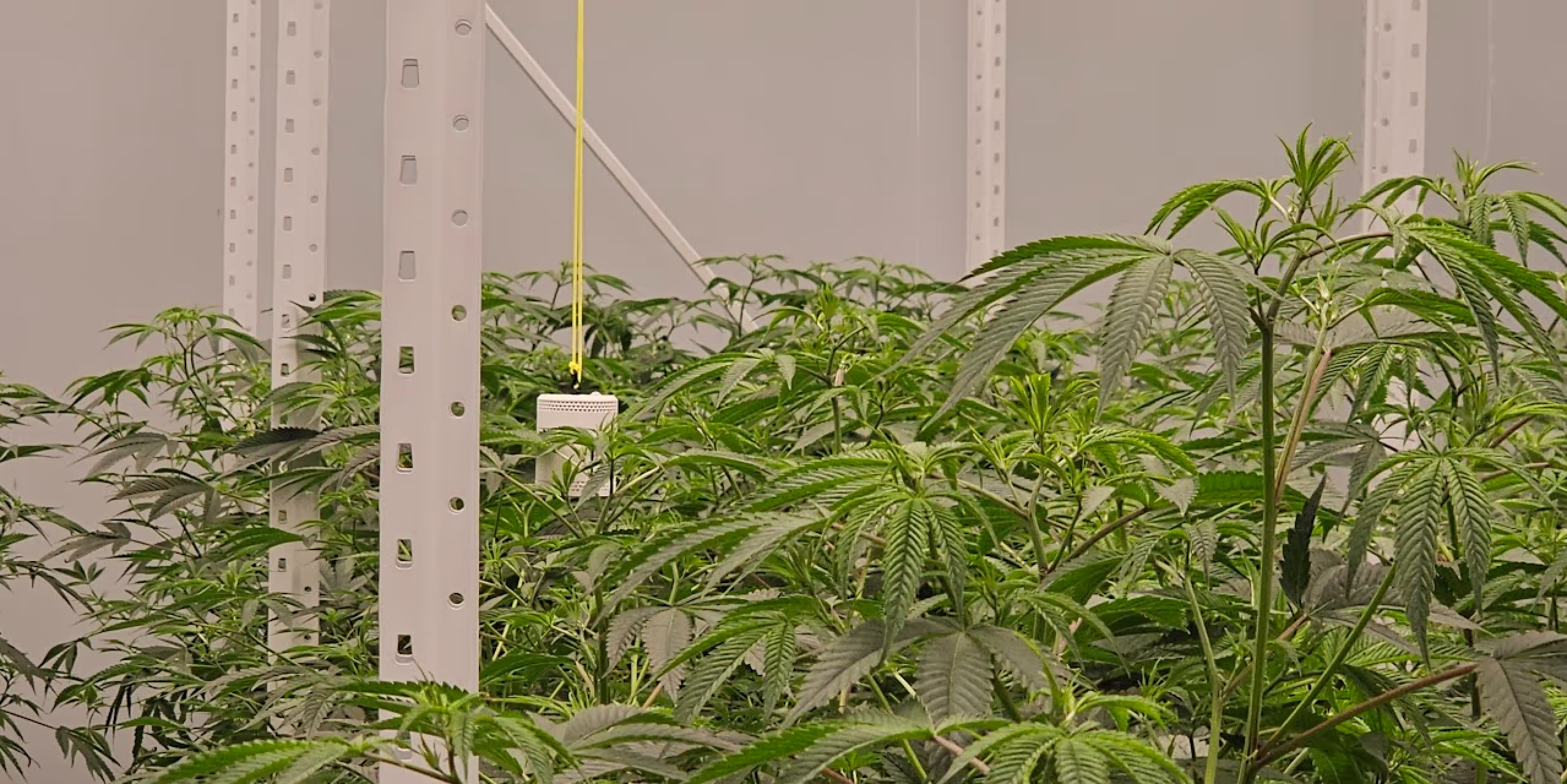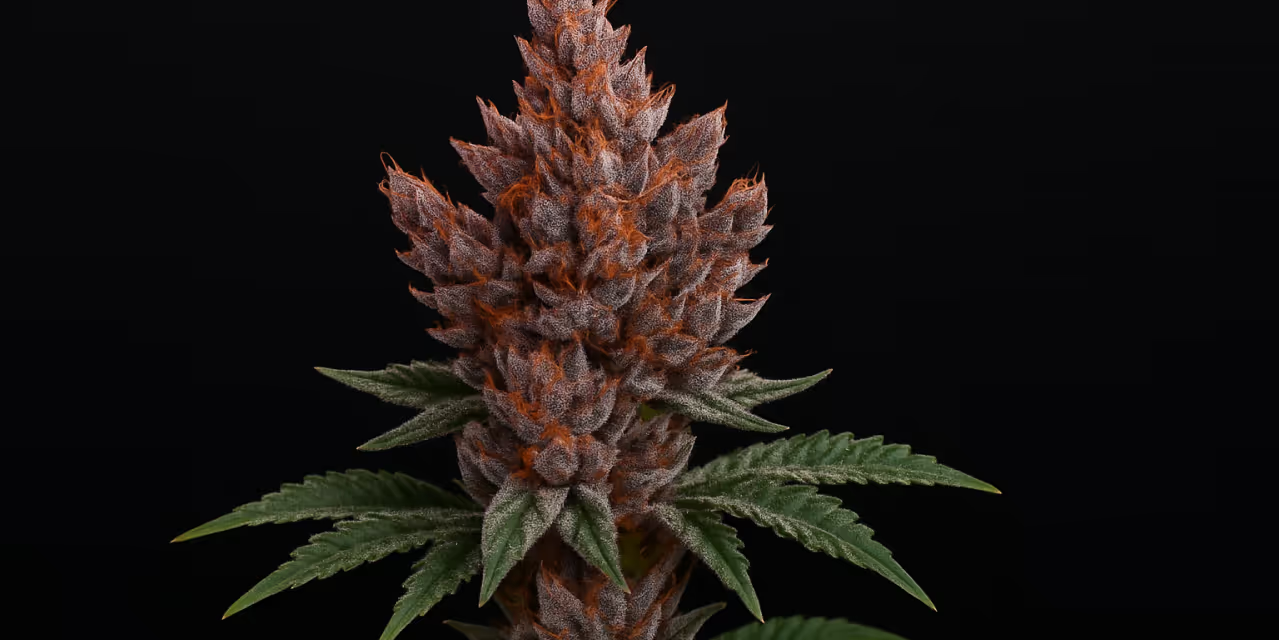Maximise your yields with low stress training


Want to ramp up your cannabis yields with minimal effort?
This post has the solution you need: low stress training (LST).
Without proper training, your plants won't reach their full potential, leading to fewer buds and lower yields.
In this guide, you'll discover how to implement low stress training, the best tools to use, and tips for combining LST with other methods. By the end, you'll know how to maximise your harvests with expert techniques.
We’ve got the proven strategies and know-how to help you succeed. Keep reading to transform your grow and get the most from your plants!
Disclaimer: Any information given on this site is for educational purposes only. Please ensure if you’re growing cannabis, you’re doing so by the law and subject to appropriate permissions and licenses of the applicable country.
What is low stress training?
Low-stress training is a plant training technique in which you gently bend and tie down a plant’s stems or branches.
LST techniques allow you to control the plant's shape and structure without causing significant stress.
Unlike high stress training methods, such as topping or super cropping, LST focuses on minimal damage.
The goal is to create a flat canopy, ensuring all parts of the plant receive equal light. This technique can be particularly beneficial for cannabis plants.
LST is often used in combination with other plant training methods like scrogging, pruning, and defoliation.
Scrogging involves training the plant through a net, pruning removes unwanted growth, and defoliation is carried out to increase light penetration.
The belief is that bending a branch is less stressful on the plant compared to regular pruning.

Is low stress training worth it?
Yes. Low stress training offers numerous benefits that can help you achieve higher yields:
- Expanded canopy: Bending one branch after another can spread the plant out, increasing light to all bud sites at the same height on your cannabis plant.
- More bud sites: LST encourages the development of multiple bud sites, leading to higher yields.
- Controlled height: If you've got a grow space with height restrictions, LST keeps your plants shorter, more manageable and the same height.
- Healthier growth: LST causes less stress than other techniques, promoting healthier new growth.
-
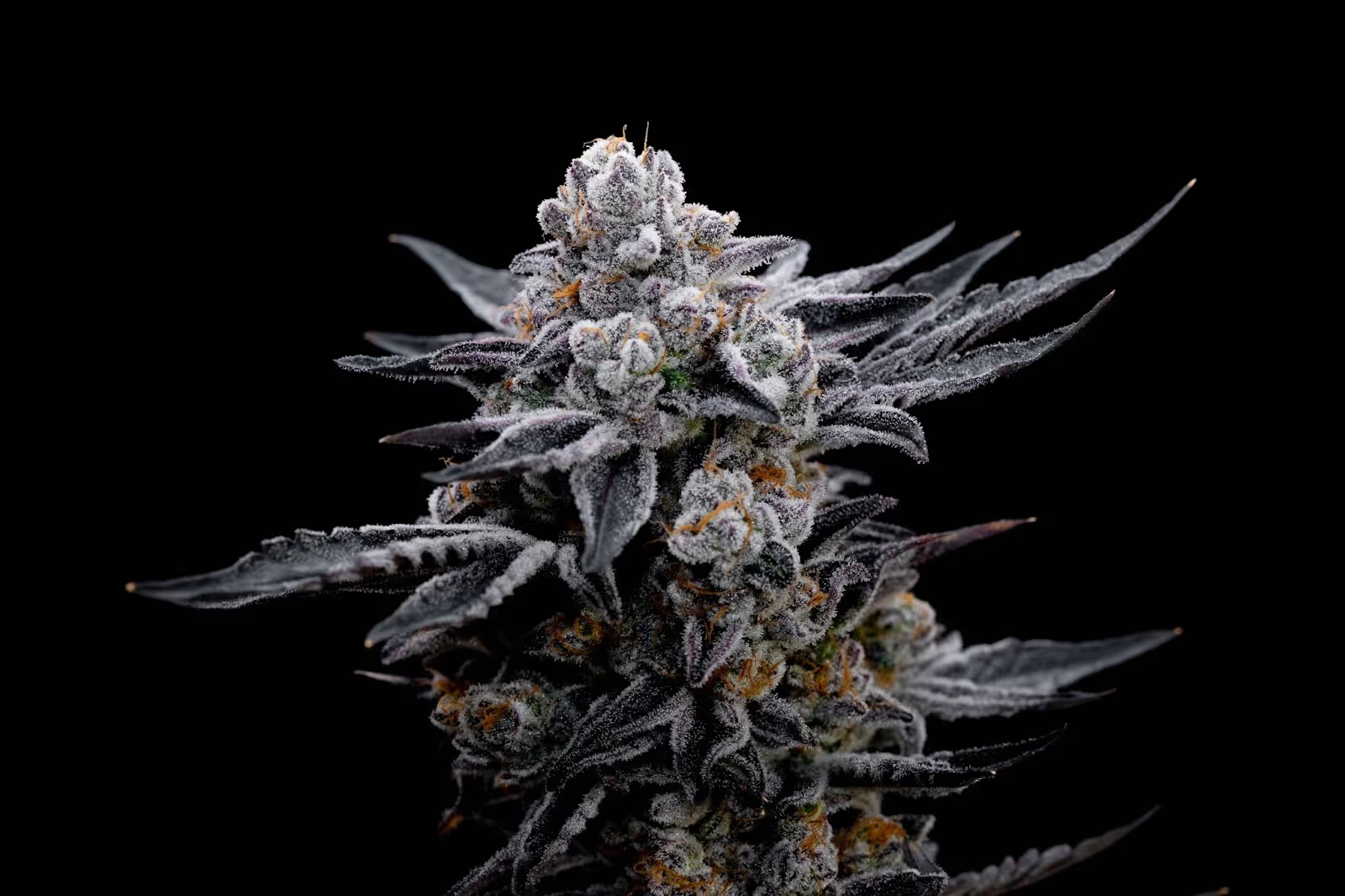
Does LST increase yield?
Yes, low stress training (LST) can significantly increase your cannabis yields. You create a more even canopy by gently bending and tying down branches.
This ensures all parts of the plant receive more light from your light source, which promotes better growth and higher bud production.
Improved light availability to the entire plant helps develop more buds, leading to larger yields.
This method ensures lower branches get as much light as the top ones, preventing smaller buds from forming because of light deprivation. Experienced growers often LST cannabis to maximise their harvest.
By maintaining a level canopy, you increase yields and improve the overall health and structure of a cannabis plant.
This technique is particularly beneficial for indoor growers, where light sources can be limited and efficient use of space and the light cycle is crucial. Outdoor plants can also benefit from LST.
Incorporating LST into your cultivation practices can lead to more productive and healthier cannabis plants.
Case studies
While there are numerous anecdotal reports and expert recommendations supporting the effectiveness of low stress training in increasing cannabis yields, there is limited scientific research specifically focused on this technique.
Most available studies on plant training and pruning methods focus on fruit trees or general horticultural practices rather than cannabis-specific cultivation.
However, the principles behind LST are well-documented in plant science.
LST works by manipulating apical dominance, the phenomenon where the main stem of the plant grows more vigorously than the side branches because of higher concentrations of growth hormones.
By bending the main stem and side branches, LST redistributes these hormones, encouraging the growth of multiple colas and a more even canopy.
This results in improved direct light availability and utilisation, key factors in increasing yields.
Here are a few related studies and principles to validate that LST increases yields:
Light distribution and plant growth
Studies have shown that even light distribution across the plant canopy leads to better photosynthesis and growth.
For instance, a study published in the Journal of Experimental Botany found that optimal light distribution improves the photosynthetic efficiency of plants, leading to better growth and yield (Murchie & Niyogi, 2011).
Apical dominance
The concept of apical dominance and its manipulation is well-documented in plant physiology.
Research on various plant species has shown that altering apical dominance by removing or bending the main stem can stimulate the growth of lateral branches, leading to bushy plants with more flowering sites (Cline, 1997).
Plant training techniques
General horticultural research supports the use of plant training techniques to improve yields.
A study on tomato plants published in Scientia Horticulturae demonstrated that training and pruning techniques significantly affect plant structure and yield (Gruda & Tanny, 2014).
Low stress training leverages known plant responses to light and hormonal distribution, making it a logical and effective method for increasing cannabis yields.
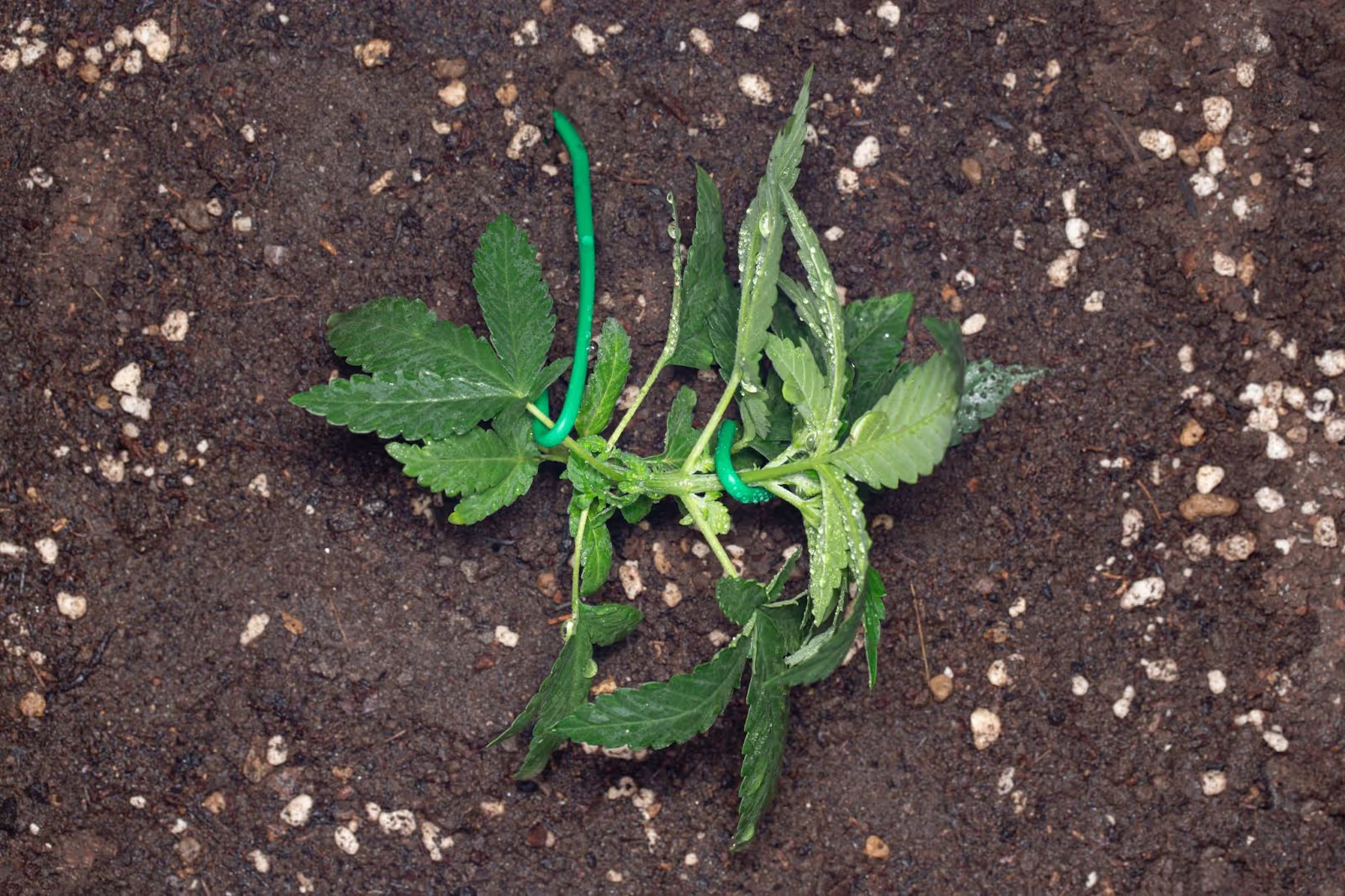
How and when to start low stress training cannabis plants
Starting LST is easy. Here's how to tackle the entire process of low stress training step by step:
- Start at the right time: Begin low stress training during the plant’s vegetative stage when the plant is still flexible. Starting early helps shape the plant as it grows.
- Select branches: Choose branches to bend. Gently massage the branch in multiple places to make it more pliable.
- Bend and secure: Carefully bend the plant stems or branches and secure them using plant ties, string, or plastic clips. Avoid snapping, but if it happens, use duct tape to repair the branch.
- Allow recovery: Ensure your plant recovers between training sessions. This ensures it continues to grow healthily.
Low stress training is particularly effective during the veg because the branches are more flexible.
As the plant moves into the flowering stage, the branches become stiffer, making them harder to bend. Therefore, it's crucial to start LST during the vegetative growth stage and continue training as the plant grows.
Low stress training techniques and methods
There are various techniques you can use to optimise low stress training:
- Tying down branches: Many growers attach ties or string to each plant container to hold branches in place.
- Scrog net: Incorporate a scrog net to support and train the plant. As the plant grows through the net, weave branches to maximise light exposure.
- Plastic clips: Plastic clips can be used to keep branches bent without causing damage.
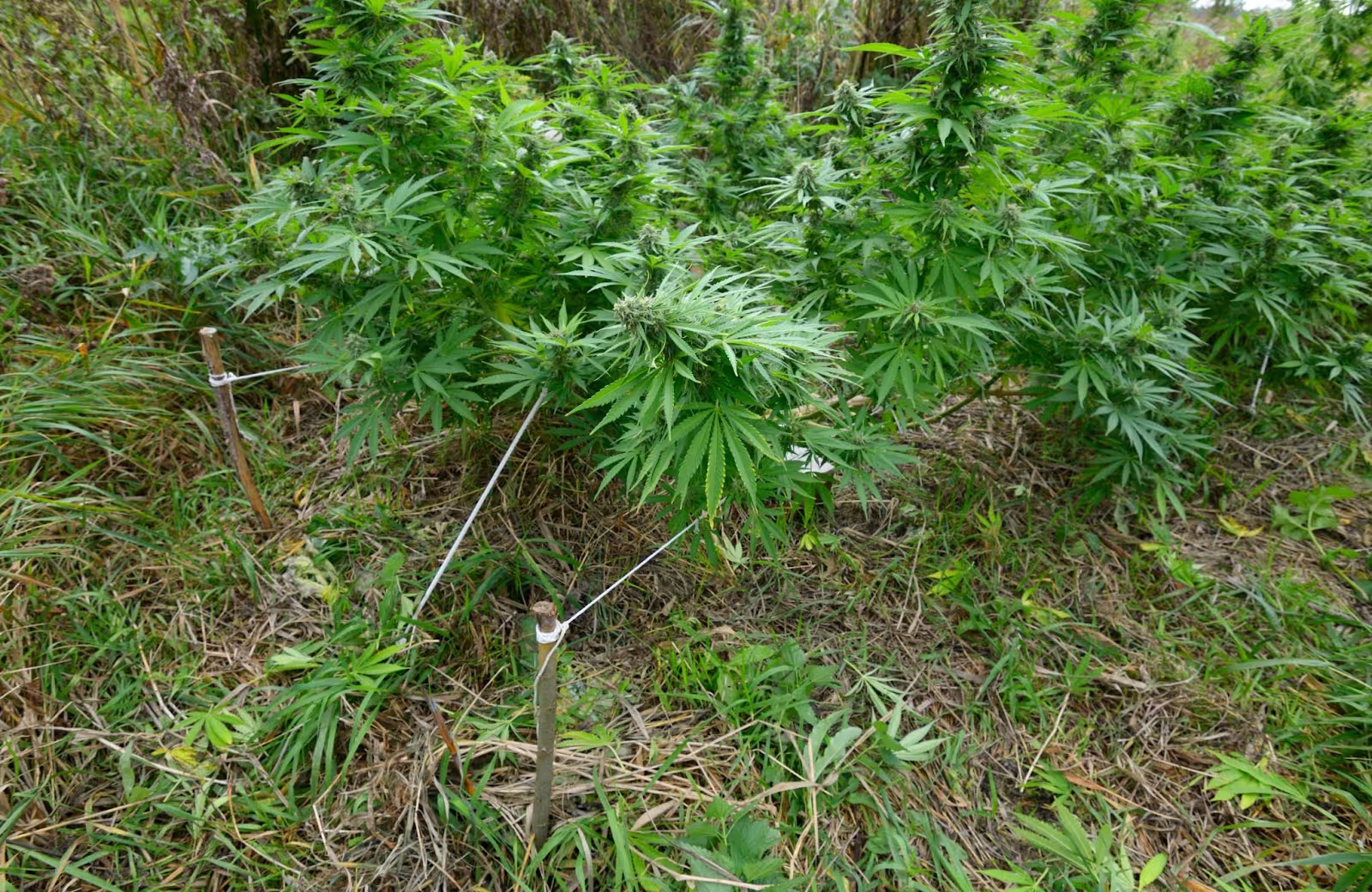
When to stop low stress training?
You should generally stop low stress training (LST) once your cannabis plant enters the flowering stage.
Complete most of your LST during the vegetative phase, ensuring a level canopy and well-distributed flower sites before flowering begins.
You can make minor adjustments during the early flowering stage if necessary, but avoid major bending to prevent stress.
Get expert growing advice – sign up for the Grow The Best cannabis newsletter below now!

Combining low stress training with other cannabis plant training methods
LST can be combined with other training methods for even better results:
Scrogging
LST and scrogging work well together. The scrog net supports the plant while LST shapes it.
Pruning and defoliation
Using LST with pruning removes unwanted growth and defoliation to improve light availability.
High stress training
Although LST is less stressful, combining it with high stress techniques can maximise yields. Be cautious and monitor your plant's response.
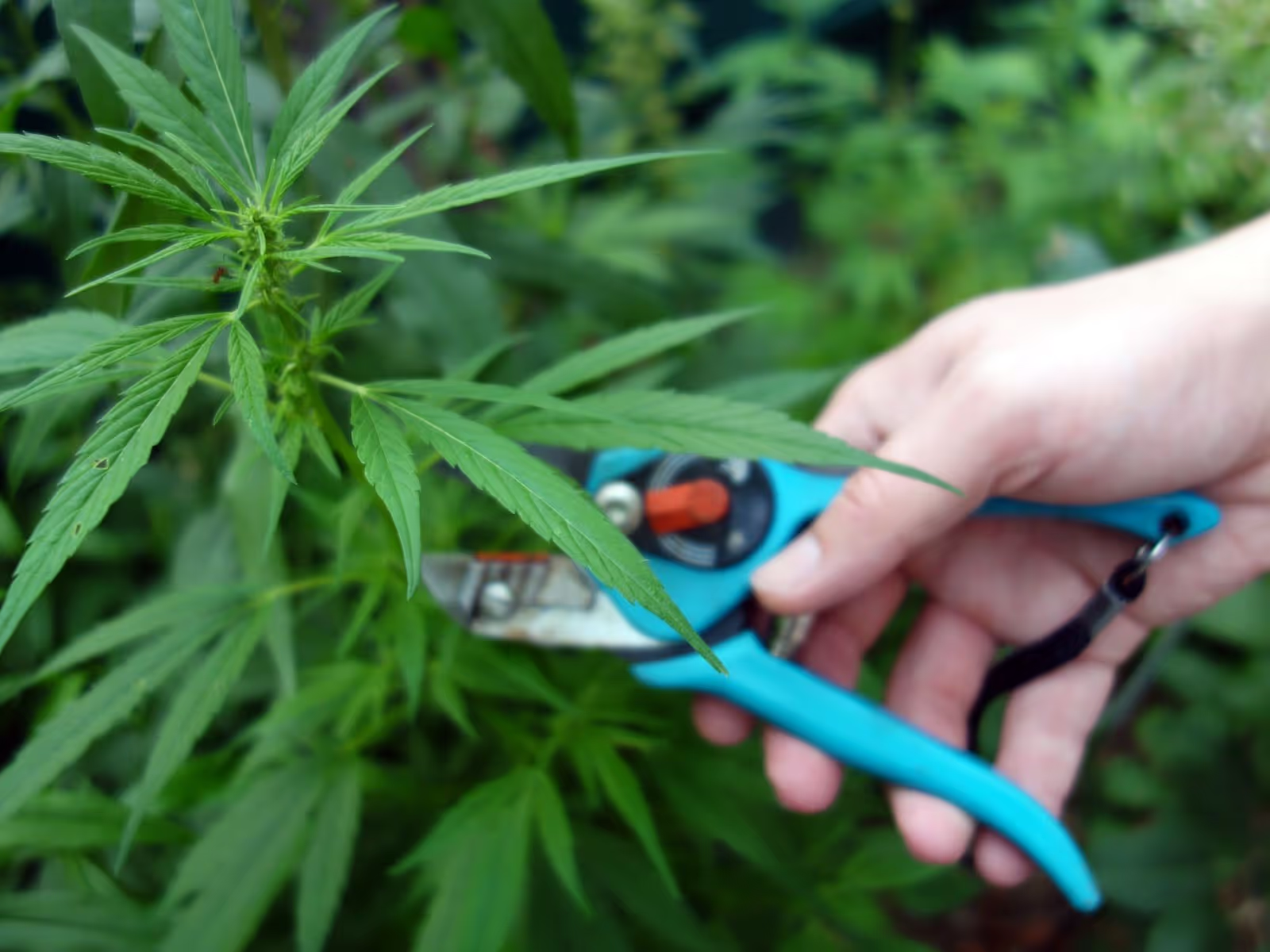
Can you top and LST at the same time?
Yes, you can combine topping and low stress training (LST) to maximise your cannabis yields.
Topping involves cutting off the main stem's tip to encourage the plant to grow multiple colas instead of one main bud. This technique can be effectively combined with LST to manipulate the plant's growth further.
After topping your plant, start LST by gently bending and tying down the branches. This combination encourages your plant to grow horizontally, allowing for better light availability and more bud development.
Using both techniques, you can optimise the plant’s structure, promote vigorous growth, and increase yields.
However, be mindful of your plant’s stress levels. Both topping and LST cause stress, so ensure your plant has time to recover between each technique. Monitor your plant’s response and make adjustments as needed.

Can you do LST without topping?
Yes. LST without topping helps maintain the plant’s natural growth pattern while still promoting multiple colas.
This technique is especially beneficial for growers who want to avoid the additional stress caused by topping. This gentler approach can lead to a bushier cannabis plant with numerous flower sites.
LST can be successfully done without topping. This method alone can significantly enhance light penetration, promote healthier growth, and increase your yields, making it a valuable technique for any cannabis growers.
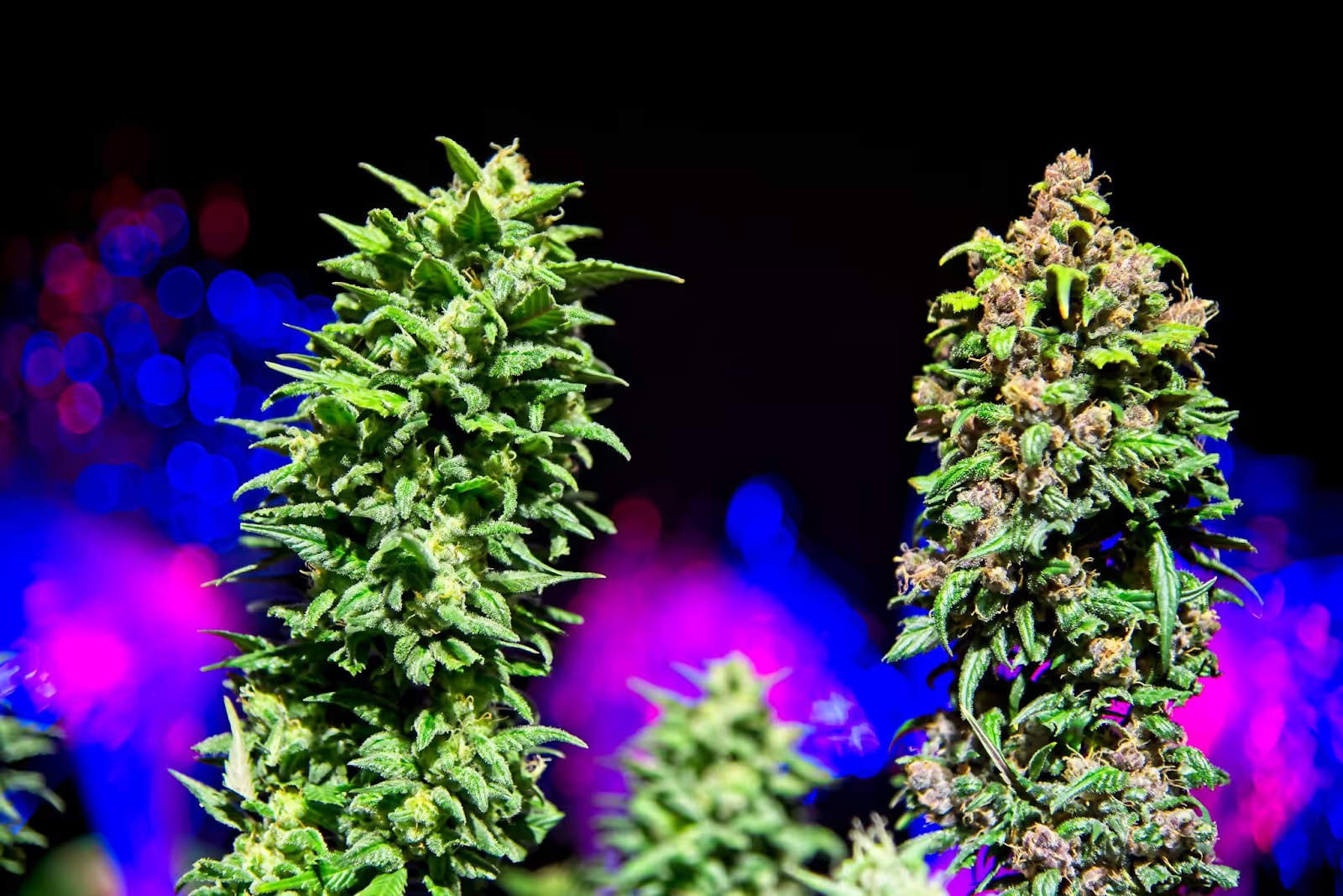
LST for different cannabis strains
Low stress training (LST) is versatile and works well with various cannabis strains, allowing you to tailor your approach for optimal results. Here’s how LST can be adapted for different types of cannabis plants:
Autoflower low stress training
Low stress training autoflower strains is ideal because it doesn’t stress them too much and allows for better yields.
Autoflowering plants have a shorter lifecycle, making them sensitive to high stress training methods that can slow growth.
Using LST, you can manipulate the plant’s structure without causing significant stress, ensuring the plant continues to grow vigorously without impacting the plant's growth cycle.
Low stress training for Indica strains
Indica strains typically have a bushier, more compact growth pattern.
LST helps manage this by spreading out the branches to create a level canopy. This ensures even light distribution, preventing lower branches from being overshadowed.
With Indica strains, focus on gently bending and tying down the side branches to maintain a uniform height and promote lateral growth.
Low stress training for Sativa strains
Sativa strains tend to grow taller and more leggy. LST is beneficial for controlling their height, especially if you’re growing indoors with limited space.
By bending the main stem and side branches, you can encourage sideways growth and prevent the plant from getting too tall.
This method also helps manage the plant's structure, ensuring it fits within your grow space while still receiving adequate light.
Tailoring techniques to specific strains
Adjust your LST approach based on the specific strain you are growing. Some strains require more frequent bending and tying, while others require a gentler touch. Monitor your plant's response to LST and make adjustments as necessary.
LST is a highly adaptable technique that works well with various cannabis strains, including autoflowers, Indicas, Sativas, and hybrids.
You can also use LST on outdoor cannabis plants
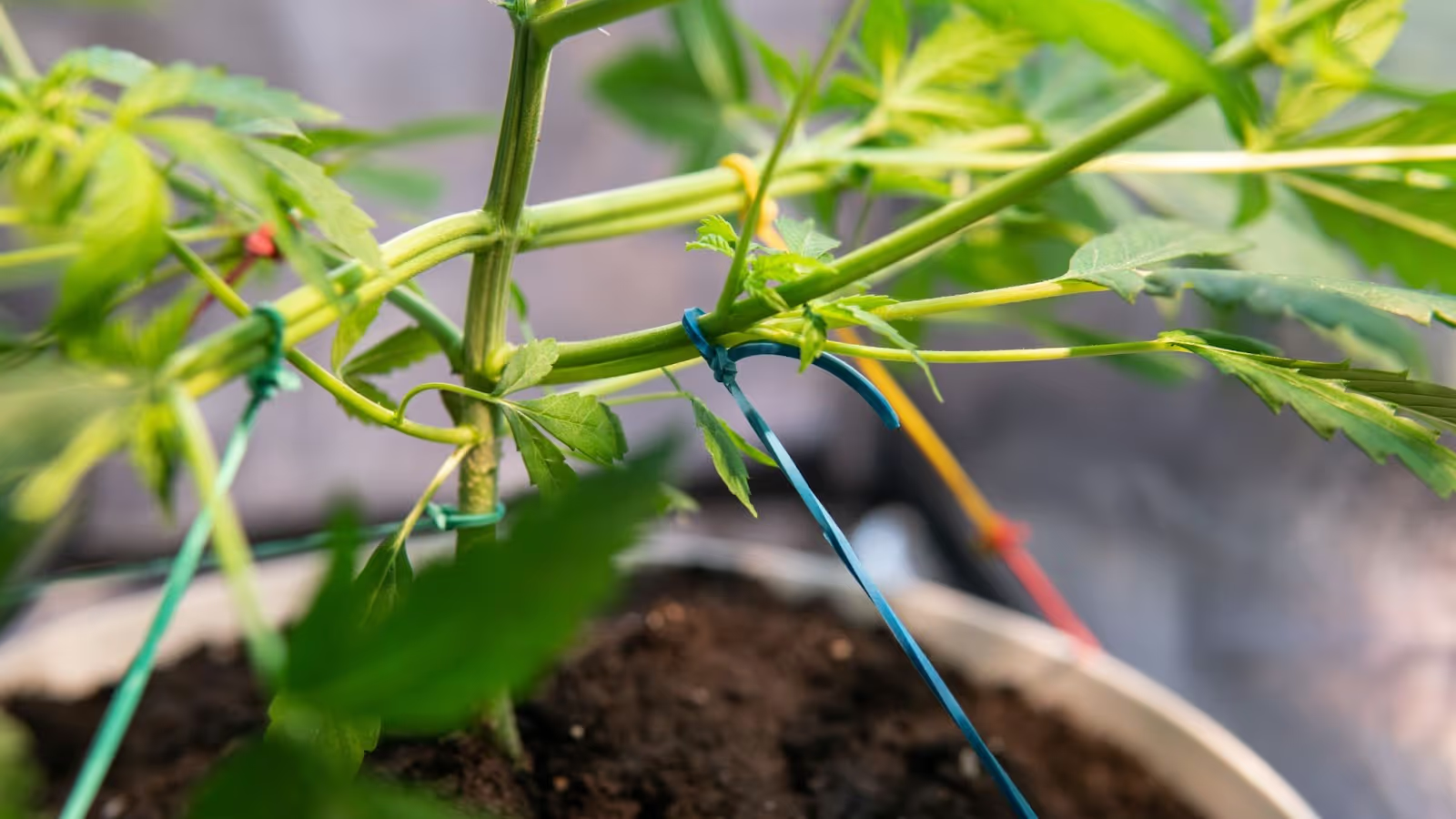
Common mistakes and troubleshooting
Avoid common mistakes to ensure successful LST:
- Over-bending: Be gentle when bending branches to prevent snapping.
- Ignoring recovery time: Allow your plant time to recover between training sessions.
- Inadequate light: Ensure your plant receives adequate light, especially after training.
If a branch does accidentally snap, don’t panic. Use tape to repair it, and your plant will likely recover.

Takeaways
Low stress training (LST) is a powerful tool for any cannabis grower. Using LST techniques, most growers can maximise their yields and ensure healthier, more productive plants.
Start low stress training plants during the veg when the branches are flexible and easier to manipulate.
This early intervention helps the plant achieve the desired shape as it grows, creating a flat canopy that promotes even light distribution to all buds.
Combining LST with other methods like scrogging, pruning, and defoliation can further enhance your results.
These combined techniques allow you to optimise light, manage plant height, and encourage the growth of lateral branches, leading to a bushier plant with more fat buds.
Monitor your plant’s response to LST and adjust as needed. Be gentle when bending branches, and allow time for recovery between training sessions.
LST is suitable for various cannabis strains, including autoflowers, Indicas, and Sativas. Tailor your approach based on the specific strain to maximise its potential.
LST is a versatile and effective technique that, when properly applied, can significantly increase your cannabis yields.
Embrace LST and watch your plants thrive, resulting in a more productive and rewarding growing experience.
Happy growing!
FAQs
What to use for LST training?
When you start LST training, having the right tools can make the process easier and more effective. Here’s a list of essential items you'll need for successful cannabis LST:
- Plant ties or soft string: These are crucial for securing bent branches. Choose ties that are soft and flexible to avoid damaging the plant. Soft gardening wire or coated ties are excellent options.
- Plastic clips: These are useful for gently holding branches in place without causing harm. They are easy to adjust and can be reused.
- Scrog net: If you plan to combine LST with scrogging, a scrog net will help support and train the plant. The net allows you to weave branches through it, maximising light availability and encouraging even growth.
- Duct tape: Accidents happen. If you end up with a broken stem, tape is invaluable for repairing it. Simply tape the broken branch back together; it will often heal and continue growing.
- Pliers or tweezers: These tools can help you manipulate branches more precisely. They are particularly useful when dealing with smaller or more rigid branches.
- Support stakes: Use these to support larger branches or the main stem. Stakes help maintain the plant’s structure as it grows and spreads out.
- Soft gardening wire: This wire is gentle on plants and can be used to guide and secure branches. It’s flexible and can be adjusted as the plant grows.
Does LST slow growth?
Low stress training (LST) does not significantly slow down the growth of your cannabis plants. It often promotes healthier and more robust growth.
By gently bending and securing branches, LST encourages the plant to develop many budding sites and a more even canopy.
This increased exposure of light to all parts of the plant enhances overall growth and bud production.
Unlike high stress training methods, such as topping, which can temporarily stunt growth as the plant heals, LST causes minimal stress.
This minimal stress allows the plant to continue growing without significant interruptions.
However, it's essential to be gentle when bending branches and to give your plant time to recover between training sessions.
LST can enhance growth rather than hinder it, leading to larger yields and healthier plants. Properly applied, LST ensures your cannabis plant utilises light efficiently, resulting in better overall performance.
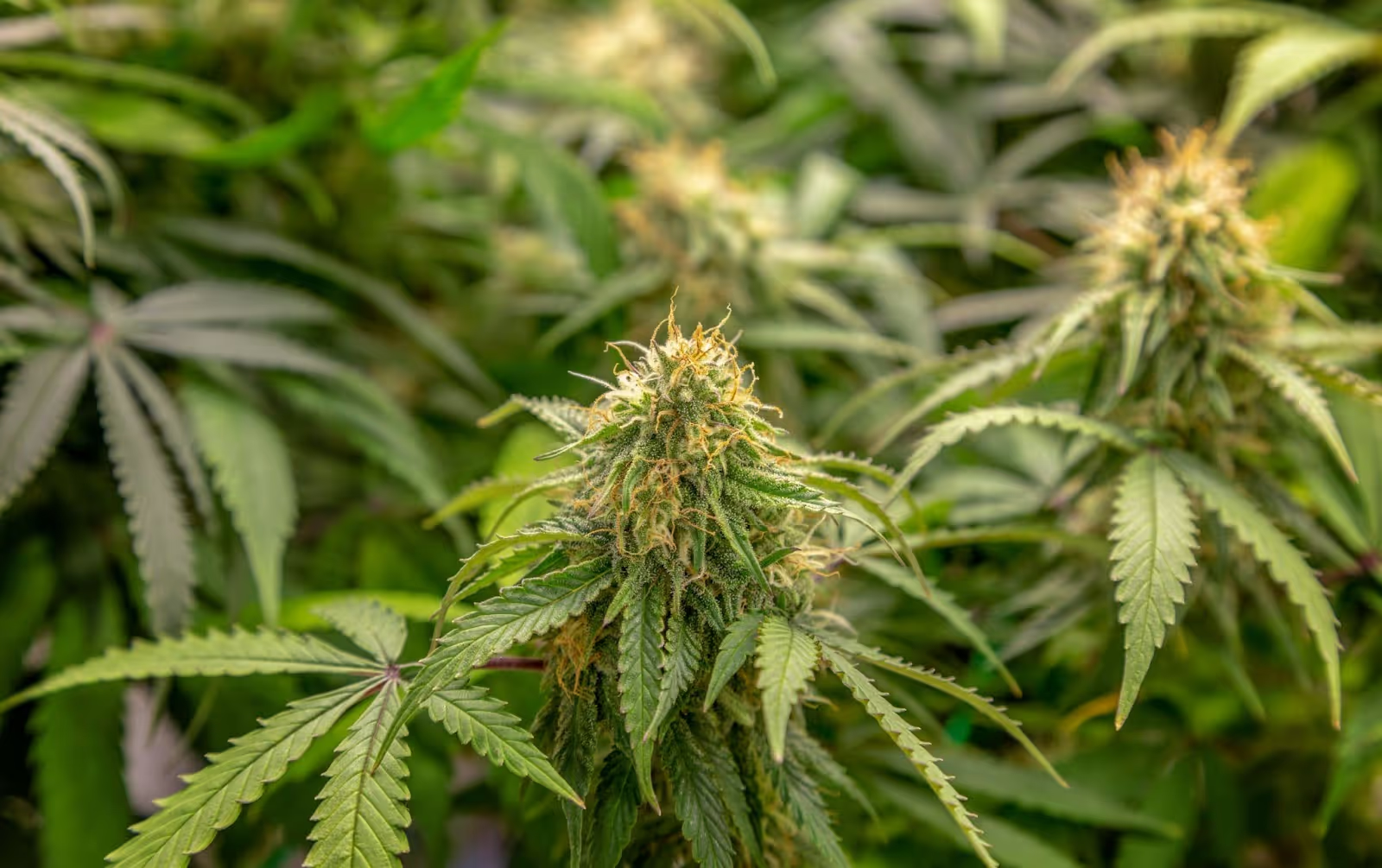
Can I LST during flowering?
You can perform low stress training (LST) during the flowering stage, but it's best to start early during the vegetative stage.
As the plant enters flowering, its branches become stiffer and less flexible, making them harder to bend without breaking.
If you decide to LST during flowering, proceed with extra care. Focus on gently adjusting existing ties rather than making significant new bends. The goal is to maintain an even canopy and ensure all buds get as much light as possible.
Be mindful that the plant’s energy during flowering is directed towards bud development.
Excessive stress at this stage can potentially reduce yields. Therefore, any LST during flowering should be minimal and carefully monitored.
While LST during flowering is possible, it is more effective and safer to implement during the vegetative stage. This approach ensures you get the most benefit with minimal risk to your cannabis plant.
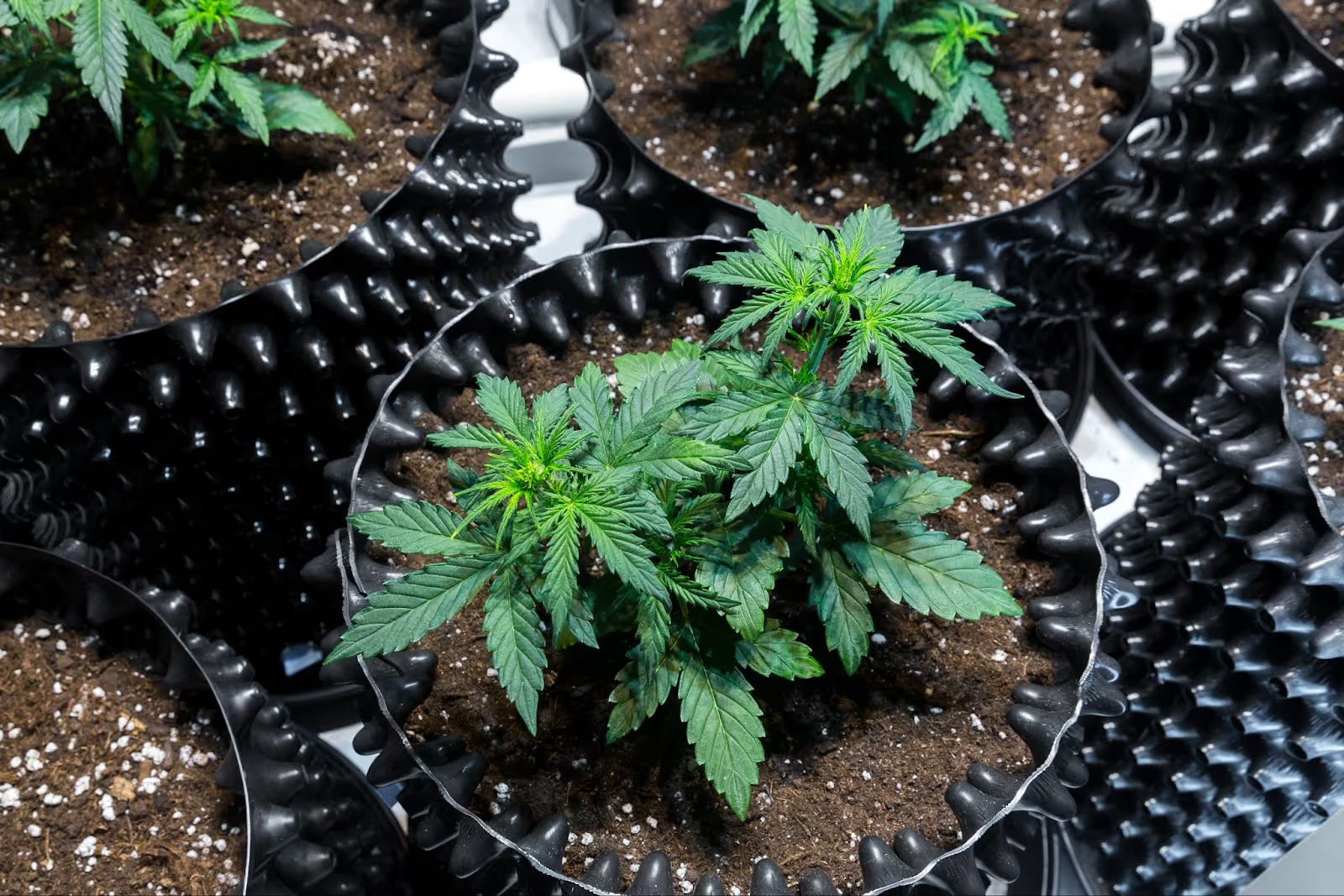
How many nodes before LST?
You should start to LST cannabis plants when they have developed at least 3 to 4 nodes. Nodes are the points on the stem where leaves and branches grow out.
At this stage, the plant is still young and flexible, making it easier to bend the branches without causing damage.
Starting LST at this early stage allows you to shape the plant’s growth pattern effectively. By bending and tying down the branches, you encourage horizontal growth and create a more even canopy.
This setup ensures better light availability to all parts of the plant, promoting healthier growth and more bud sites.
Ready to unlock premium growing secrets – join the Grow The Best cannabis newsletter!









.avif)
